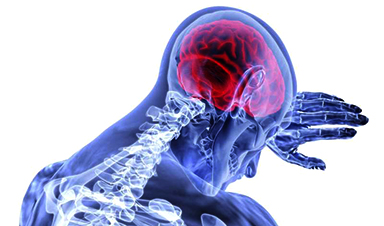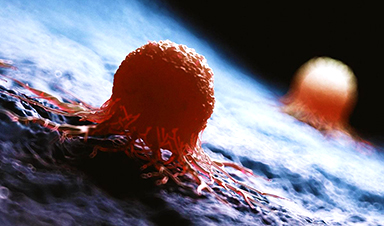Eye diseases are becoming more common. In 2020, over 250 million people had mild vision problems, and 295 million experienced moderate to severe ocular conditions.
In response, researchers are turning to nanotechnology and nanomaterials—tools that are transforming how we approach eye health. These technologies are improving how drugs are delivered to the eye and supporting new developments in tissue engineering for ocular treatments.1
Using Nanomaterials to Optimize Ocular Drug Delivery
Delivering therapeutic drugs directly to the eyes is a primary strategy in ophthalmic treatment. However, traditional methods often struggle to penetrate the ocular barrier, limiting drug effectiveness at the intended site and duration.
Nanomaterial-based carriers offer a promising solution—they can bypass this barrier, enable controlled and targeted delivery, and reduce dosing frequency.
Nanomicelles: Targeted Delivery Through Core-Shell Carriers
Nanomicelles are a key tool in ophthalmic drug delivery. These core-shell structures are made of amphiphilic polymers, with a hydrophobic core and a hydrophilic shell. This architecture allows them to encapsulate hydrophobic drugs and transport them through the eye’s protective layers.
Positively charged nanomicelles are particularly effective in delivering hydrophobic drugs to various parts of the eye. Reverse nanomicelles, meanwhile, encapsulate drugs within their core, improving stability, enabling sustained release, and reducing potential side effects.
Nanomicelles made from tocopherol polyethylene glycol 1000 succinate (TPGS) and Solutol® HS15 have been used to deliver the immunomodulatory drug cyclosporine. These nanocarriers—loaded with 5 mg/mL of cyclosporine—enabled targeted, long-lasting drug delivery to the cornea and sclera.
Another innovation includes chitosan oligosaccharide valylvaline-stearic acid (CSO-VV-SA) nanomicelles, designed for precise drug delivery to corneal tissues and epithelial cells.
Nanoemulsions in Ocular Drug Delivery
Nanoemulsions are kinetically stable formulations with droplet sizes ranging from 10 to 500 nm. They have demonstrated improved drug retention on the anterior corneal surface, better penetration through ocular barriers, and increased bioavailability compared to conventional formulations.
A cationic ophthalmic nanoemulsion containing 0.5% (w/w) chitosan and a nonsteroidal anti-inflammatory drug has been applied in the treatment of ocular surface diseases. It supports tear film stability and enhances drug delivery in managing Dry Eye Disease (DED).
For bacterial keratitis—a serious infection that can lead to visual impairment—a ciprofloxacin-loaded nanoemulsion (CIP-NE) was developed. This spherical formulation showed a zeta potential of −35.1 ± 2.1 mV and a polydispersity index of 0.13 ± 0.01.
In trans-corneal studies, CIP-NE achieved 2.1 times greater drug penetration than commercial ciprofloxacin, indicating its potential for improved treatment efficacy.3
Nanofibers in Ocular Drug Delivery
Nanofibers offer a high surface-to-volume ratio, good mechanical strength, and effective drug-loading capacity, making them suitable for ocular drug delivery. Electrospun polymeric fibers containing gentamicin and dexamethasone have been developed for the treatment of bacterial conjunctivitis.
These fibers dissolve in tear fluid and release the drugs at the site of infection. In one study, the formulation achieved a 92 % treatment success rate. Drug availability on the ocular surface increased by 342 % after approximately 320 minutes, indicating prolonged retention and sustained release.4
Nanomaterials in Ophthalmic Diagnostic Imaging
Imaging is essential for monitoring eye disease progression and evaluating treatment outcomes. Nanomaterials are being applied to improve contrast in techniques such as photoacoustic microscopy and optical coherence tomography.
Indocyanine green (ICG) has been used to label human retinal pigment epithelial cells (ARPE-19) in regenerative therapy research. One approach combines ICG with chain-like gold nanomaterials and RGD peptides, forming ICG-CGNP-clustered RGDs. These ~50 nm particles enable effective cell labeling and allow non-invasive tracking of stem cell movement in the eye.
Gold-based nanoparticles (GNPs)—including nanowires, nanoshells, and nanodisks—have been studied for their imaging contrast properties. Gold nanobipyramids, sized between 130–180 nm, have improved the sensitivity of optical coherence tomography by enhancing optical scattering. Their biocompatibility and tunable localized surface plasmon resonance (LSPR) properties support their use in ophthalmic imaging.5
Role of Nanomaterials in Ocular Tissue Engineering
Tissue engineering supports the development of stem cell-based therapies and the regeneration of damaged ocular tissues. Certain nanomaterials, such as nanofibers, are well-suited for this purpose due to their biocompatibility and surface properties that promote cell adhesion.
In experimental studies, nanofiber scaffolds have been shown to support full re-epithelialization of human corneal tissue. They have also been investigated for their role in modulating anti-inflammatory gene expression.6
Nanostructured dendrimers are another class of materials being explored for corneal tissue repair. These materials offer high-density functional side chains, potential for cross-linking, and scalability. Dendrimer-based hydrogels have been applied in corneal tissue engineering without signs of inflammation or infection. Their structural properties support wound closure and the regeneration of healthy corneal tissue.7
Regulatory and Safety Considerations
The development and approval of nanomaterial-based therapies for ophthalmic use present regulatory challenges that differ significantly from those of conventional drugs. Currently, there are no standardized protocols for assessing the toxicity of nanomaterials in the distinct layers of the eye.
Regulatory agencies such as the U.S. Food and Drug Administration (FDA) and the European Medicines Agency (EMA) have stringent requirements for demonstrating the safety and biocompatibility of nanomaterials. These include validated manufacturing processes to ensure batch-to-batch consistency, compliance with Good Manufacturing Practice (GMP), stability testing, and sterility for ocular formulations. These added steps increase both the complexity and cost of product development.
Safety testing must also evaluate potential oxidative stress, biocompatibility, and effects on cellular viability. Delivering drugs to specific regions of the eye—such as the vitreous body or retina—remains difficult due to the eye’s compartmentalized anatomy and active clearance mechanisms.
While increasing the drug dose might seem like a solution, it carries risks such as inflammation, cytotoxicity, or increased intraocular pressure. These risks are especially serious in sensitive tissues like the retina, where damage could lead to permanent vision loss, emphasizing the importance of precise dosing strategies.
Ongoing research aims to address these challenges by improving the precision and duration of nanomaterial-based drug delivery in the eye.8
Emerging Tools and Technologies in Ocular Medicine
Emerging research is exploring the integration of nanotechnology with advanced genetic tools, such as CRISPR-Cas systems, to develop targeted therapies for ocular diseases. These approaches may enable the correction of multiple genetic defects involved in complex eye conditions.9
Researchers are also investigating the use of nanoscale robotic systems for high-resolution imaging, with the potential to replace traditional contrast agents and dyes. Advances in sub-atomic tuning of nanomaterials may support the development of more precise and adaptable therapies for ocular conditions.
As these technologies mature, they could contribute to improved diagnostic imaging, biosensing, and drug delivery strategies aimed at managing and preventing serious eye diseases.
To keep up with the latest breakthroughs in diagnostics, therapeutics, and next-generation nanotechnologies, subscribe to our expert-curated Nanomedicine Newsletter.
References and Further Reading
- Bourne, R., et. al. (2021). Trends in prevalence of blindness and distance and near vision impairment over 30 years: an analysis for the Global Burden of Disease Study. The Lancet global health. Available at: https://doi.org/10.1016/S2214-109X(20)30425-3
- Xu, X., et. al. (2020). Functional chitosan oligosaccharide nanomicelles for topical ocular drug delivery of dexamethasone. Carbohydrate polymers. Available at: https://doi.org/10.1016/j.carbpol.2019.115356
- Youssef, A., et. al. (2021). Design of Topical Ocular Ciprofloxacin Nanoemulsion for the Management of Bacterial Keratitis. Pharmaceuticals. Available at: https://doi.org/10.3390/ph14030210
- Li, S., Chen, L., Fu, Y. (2023). Nanotechnology-based ocular drug delivery systems: recent advances and future prospects. Journal of nanobiotechnology. Available at: https://doi.org/10.1186/s12951-023-01992-2
- Nguyen, V., et. al. (2024). Advanced nanomaterials for imaging of eye diseases. ADMET and DMPK. Available at: https://doi.org/10.5599/admet.2182
- U, Egemen., et. al. (2023). Nanofibers in Ocular Drug Targeting and Tissue Engineering: Their Importance, Advantages, Advances, and Future Perspectives. Pharmaceutics. Available at: https://doi.org/10.3390/pharmaceutics15041062
- Mijanović, O., et. al. (2021). Tissue Engineering Meets Nanotechnology: Molecular Mechanism Modulations in Cornea Regeneration. Micromachines. Available at: https://doi.org/10.3390/mi12111336
- Mahaling, B., et. al. (2024). Nanomedicine in Ophthalmology: From Bench to Bedside. Journal of Clinical Medicine. https://doi.org/10.3390/jcm13247651
- Mehta, N., et. al. (2024). Nanotechnology in retinal disease: Current concepts and future directions. Journal of Ocular Pharmacology and Therapeutics. https://doi.org/10.1089/jop.2023.0083
News
Very low LDL-cholesterol correlates to fewer heart problems after stroke
Brigham and Women's Hospital's TIMI Study Group reports that in patients with prior ischemic stroke, very low achieved LDL-cholesterol correlated with fewer major adverse cardiovascular events and fewer recurrent strokes, without an apparent increase [...]
“Great Unified Microscope” Reveals Hidden Micro and Nano Worlds Inside Living Cells
University of Tokyo researchers have created a powerful new microscope that captures both forward- and back-scattered light at once, letting scientists see everything from large cell structures to tiny nanoscale particles in a single shot. Researchers [...]
Breakthrough Alzheimer’s Drug Has a Hidden Problem
Researchers in Japan found that although the Alzheimer’s drug lecanemab successfully removes amyloid plaques from the brain, it does not restore the brain’s waste-clearing system within the first few months of treatment. The study suggests that [...]
Concerning New Research Reveals Colon Cancer Is Skyrocketing in Adults Under 50
Colorectal cancer is striking younger adults at alarming rates, driven by lifestyle and genetic factors. Colorectal cancer (CRC) develops when abnormal cells grow uncontrollably in the colon or rectum, forming tumors that can eventually [...]
Scientists Discover a Natural, Non-Addictive Way To Block Pain That Could Replace Opioids
Scientists have discovered that the body can naturally dull pain through its own localized “benzodiazepine-like” peptides. A groundbreaking study led by a University of Leeds scientist has unveiled new insights into how the body manages pain, [...]
GLP-1 Drugs Like Ozempic Work, but New Research Reveals a Major Catch
Three new Cochrane reviews find evidence that GLP-1 drugs lead to clinically meaningful weight loss, though industry-funded studies raise concerns. Three new reviews from Cochrane have found that GLP-1 medications can lead to significant [...]
How a Palm-Sized Laser Could Change Medicine and Manufacturing
Researchers have developed an innovative and versatile system designed for a new generation of short-pulse lasers. Lasers that produce extremely short bursts of light are known for their remarkable precision, making them indispensable tools [...]
New nanoparticles stimulate the immune system to attack ovarian tumors
Cancer immunotherapy, which uses drugs that stimulate the body’s immune cells to attack tumors, is a promising approach to treating many types of cancer. However, it doesn’t work well for some tumors, including ovarian [...]
New Drug Kills Cancer 20,000x More Effectively With No Detectable Side Effects
By restructuring a common chemotherapy drug, scientists increased its potency by 20,000 times. In a significant step forward for cancer therapy, researchers at Northwestern University have redesigned the molecular structure of a well-known chemotherapy drug, greatly [...]
Lipid nanoparticles discovered that can deliver mRNA directly into heart muscle cells
Cardiovascular disease continues to be the leading cause of death worldwide. But advances in heart-failure therapeutics have stalled, largely due to the difficulty of delivering treatments at the cellular level. Now, a UC Berkeley-led [...]
The basic mechanisms of visual attention emerged over 500 million years ago, study suggests
The brain does not need its sophisticated cortex to interpret the visual world. A new study published in PLOS Biology demonstrates that a much older structure, the superior colliculus, contains the necessary circuitry to perform the [...]
AI Is Overheating. This New Technology Could Be the Fix
Engineers have developed a passive evaporative cooling membrane that dramatically improves heat removal for electronics and data centers Engineers at the University of California San Diego have created an innovative cooling system designed to greatly enhance [...]
New nanomedicine wipes out leukemia in animal study
In a promising advance for cancer treatment, Northwestern University scientists have re-engineered the molecular structure of a common chemotherapy drug, making it dramatically more soluble and effective and less toxic. In the new study, [...]
Mystery Solved: Scientists Find Cause for Unexplained, Deadly Diseases
A study reveals that a protein called RPA is essential for maintaining chromosome stability by stimulating telomerase. New findings from the University of Wisconsin-Madison suggest that problems with a key protein that helps preserve chromosome stability [...]
Nanotech Blocks Infection and Speed Up Chronic Wound Recovery
A new nanotech-based formulation using quercetin and omega-3 fatty acids shows promise in halting bacterial biofilms and boosting skin cell repair. Scientists have developed a nanotechnology-based treatment to fight bacterial biofilms in wound infections. The [...]
Researchers propose five key questions for effective adoption of AI in clinical practice
While Artificial Intelligence (AI) can be a powerful tool that physicians can use to help diagnose their patients and has great potential to improve accuracy, efficiency and patient safety, it has its drawbacks. It [...]





















